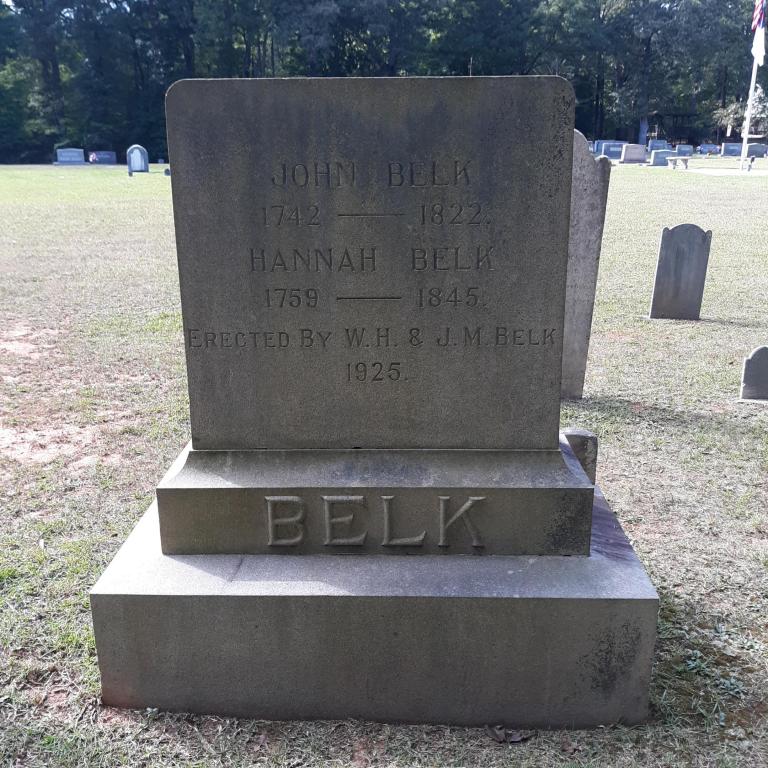John BELK Sr
SAR Patriot #:
P-112507
The following information was assembled from numerous sources and cannot be used directly as proof of Qualifying Service or Lineage.
It is considered a research aid and is intended to assist in locating sources that can be used as proof.
State of Service: NC
Qualifying Service: Private
DAR #: A008652
Birth: 1742 / Union / NC
Death: 1822 / Union / NC
Additional References:
56th-77th Annual Reports DAR. Senate documents (United States Congress, Senate). Government Printing Office: Washington, DC
Spouse: Hannah XX;
Children: Thomas Milburn;
Members Who Share This Ancestor
None*
*This means that the NSSAR has no applications for this Patriot on file.
Instead the information provided is best effort, and from volunteers who have either researched grave sites, service records, or something similar.
There is no documentation available at NSSAR HQ to order.
Location:
Lancaster / Lancaster / SC / USA
Find A Grave Cemetery #:
Marker Type:
SAR Grave Dedication Date:
Comments:
- The photo is displayed courtesy of Gerald Adams, SC SAR
- The cemetery is divided by a path. Staying on the path, go about 40 feet past the flagpole, and then turn left. Go almost to the tree line. The stone is quite large. The inscription is on the side facing the trees
Directions to Cemetery / Gravesite:
- From the intersection of Hwy 9 (Meeting St) and Hwy 521 (Main St) in Lancaster, SC (Lancaster County Courthouse,) take Hwy 521 (North Main St) roughly 3.9 miles to the intersection of Shiloh Unity Rd on the right. Take Shiloh Unity Rd for roughly .5 miles to Airdale Rd on the right. Take Airdale just a few hundred yards to the church on the right. Parking is available next to the cemetery. The cemetery is very well maintained
